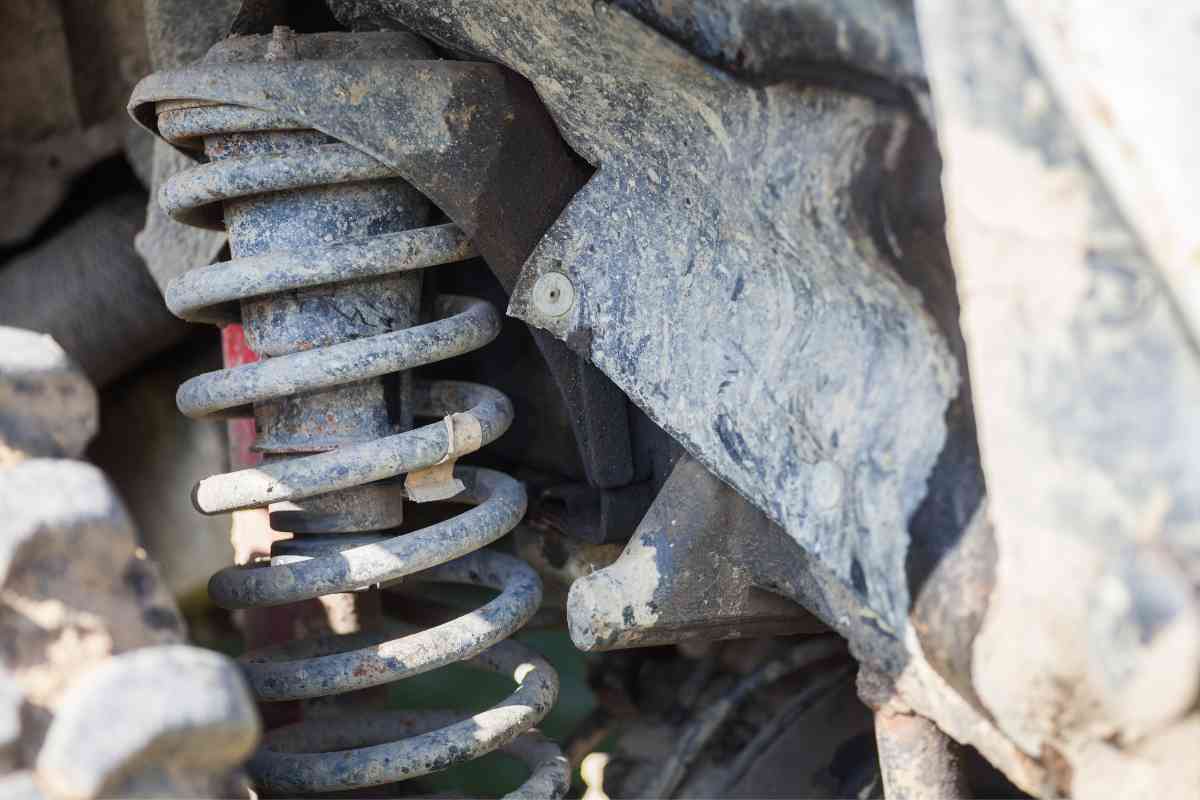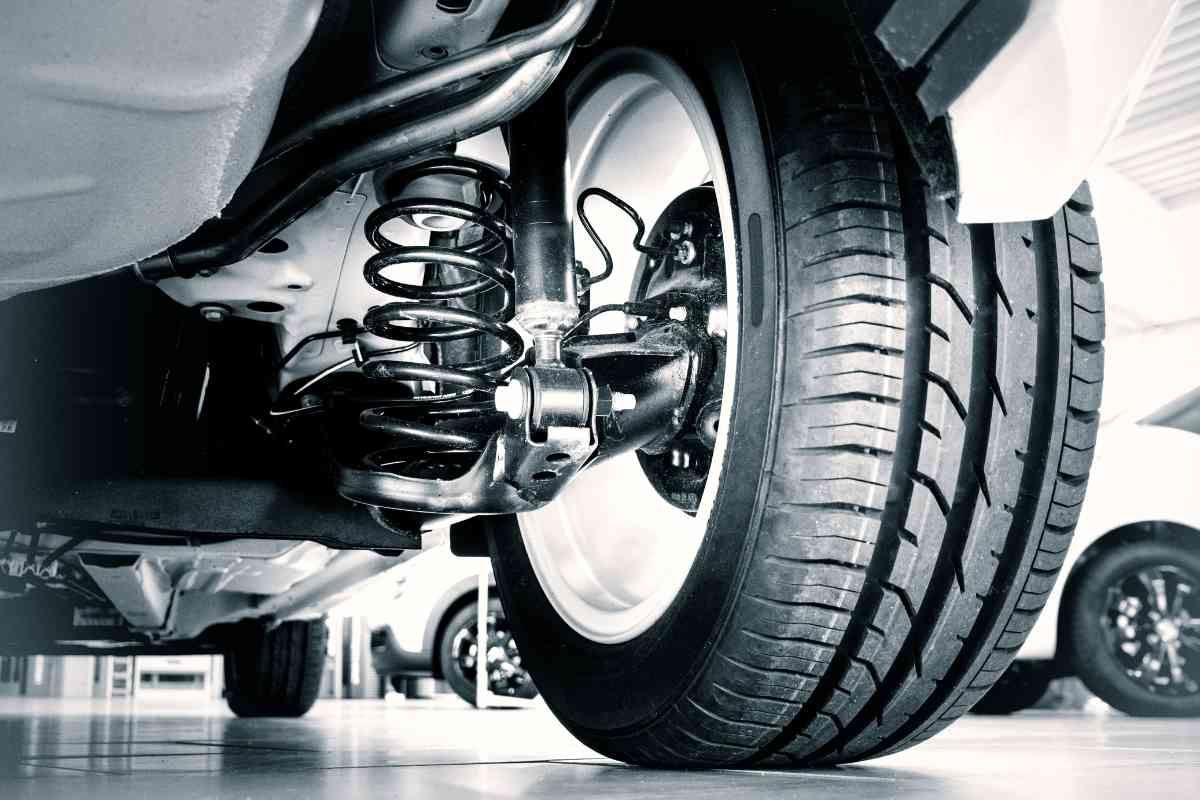Lubricating Shocks And Struts: A Step-By-Step Guide
Taking care of your suspension, especially the shocks and struts, is one of the many important parts of ensuring your vehicle will continue to run properly.

How do you lubricate your shocks and struts?
First, you’ll need to jack your car up so that the wheels are off the ground. Then, remove the wheel and use an aerosol oil can, syringe, and long nozzle oil can to lubricate and grease all of the strut bearings and bushing, and the turn plate.
As someone who takes great pride in the maintenance of all of my vehicles, I know how important it is to make sure your shocks and struts are properly lubricated.
Though you could easily take your vehicle to a mechanic to get this done, it really isn’t too difficult to do yourself, not to mention all the money you’ll save. Even if you have doubts that you’ll be able to get the job done yourself, I promise that with a bit of guidance, you’ll be a pro at lubricating your car’s shocks and status in no time.
What Are Shocks And Struts?

Before I get into the details of how to lubricate your car’s shocks and struts, it will beneficial to know exactly what shocks and struts are and what they do.
In short, shocks and struts are two of the most important components of your vehicle’s suspension system. They work to keep the tires maintain contact with the road so that your vehicle rides smoothly, handles properly, and is able to steer and brake correctly.
However, though the words shocks and struts are often used interchangeably, there are some key differences in what the shocks and struts actually do.
Shock absorbers work to limit bounce and roll so that your vehicle continues to ride smoothly. They are essentially little oil pumps that control the movement of the springs and suspension, through the use of hydraulic fluid.
Basically, as your car’s suspension moves, the hydraulic fluid in the shock is forced in and out of tiny holes in the piston, which in turn either slows down or speeds up the movement of the spring and suspension, ensuring that the right amount of resistance is applied in the right road conditions.
Struts on the other hand are a bit different. While they do perform a lot of the same functions are shocks do, the big difference is that struts are also a major part that supports the structure of your vehicle’s suspension and holds the tires in the right position.
Because struts perform this additional job, they have a major role in affecting not only the comfort, handling, steering, and braking of your vehicle but also the wheel alignment and overall health of your suspension as a whole.
No matter what, each of your car’s wheels will have either a shock or a strut, and keeping them properly lubricated is incredibly important to the well being every vehicle.
How Often Should You Lubricate Your Vehicle’s Shocks And Struts?

Unfortunately, the recommended frequency with which you should lubricate your vehicle’s shocks and struts can vary a lot depending on what car you have, your driving habits, and the conditions you are driving your vehicle in.
Generally, if you hear lots of squeaking and creaking sounds as you drive, that’s a pretty good indicator that you should lubricate your shocks and struts.
However, if you are looking for a number, ensuring that your shocks and struts are lubricated every 6000 miles will go a long way to making sure that your vehicle lasts as long as possible.
How Do You Lubricate Your Vehicle’s Shocks And Struts?
Now that we know what shocks and struts are let’s get into the details of how exactly to lubricate them.
In order to do this, you’ll need to make sure you have a few key items before getting started. You’ll need a jack and some jack stands to lift your car up as well as an aerosol oil can, syringe or long nose oil can, some oil or grease, and some rags.
First, you’ll need to lift the car up using the floor jack. Once the wheels are about to be off the ground, place the jack stands under the vehicle to make sure it is properly supported.
The next step will vary between different vehicles, but if you are unable to access the shocks and struts while the wheel is attached, you’ll need to remove the wheel in order to do so.
However, it is important to remember that not every vehicle requires this, so make sure to check before taking your wheels off for no reason.
Once you’ve gained access to the shock or strut, take the aerosol oil can and spray down all the bearings and bushings as well as the turn plate, then wait about 5 minutes to give the oil time to penetrate, and repeat this step again.
Then, use either the syringe or long nose oil can to apply grease to all of the bearings, bushings, and the turn plate.
Once you’ve completed this step, simply lower your vehicle using the jack and repeat these steps until all of the shocks and struts for every wheel have been properly lubricated.
Key Takeaways
- Shocks and struts are some of the most important parts of your vehicle’s suspension system.
- While similar, shocks and struts are too different parts. Every wheel has either a shock or a strut.
- You should lubricate your vehicle’s shocks and struts at least every 6000 miles.
- To lubricate your shocks and struts you will need to jack up your car, and use an aerosol oil can lubricate the bearings, bushings, and turn plate.
- After that, use a syringe or long nose oil can to apply grease and then lower the car back to the ground.
